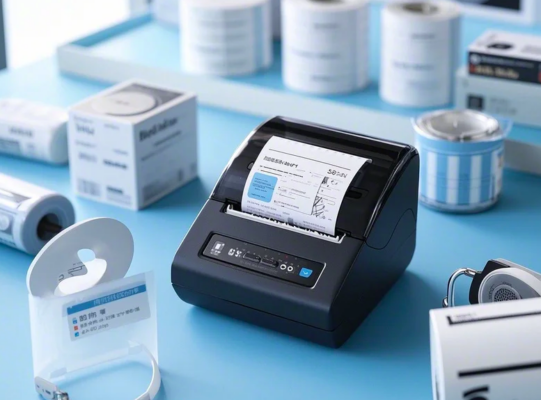Table of Contents
ToggleThermal transfer is a printing method that uses a heat-sensitive ribbon to transfer ink onto a substrate, resulting in durable and high-quality prints. In contrast, direct thermal printing does not use a ribbon; instead, it relies on heat-sensitive paper that darkens when heated. Both methods have their unique advantages and applications, making them suitable for different labeling and printing needs.

Understanding Thermal Transfer
How Thermal Transfer Works
In thermal transfer printing, a ribbon coated with wax, resin, or a combination of both is used. When the print head heats up, the ink from the ribbon is transferred onto the label material. This method produces long-lasting and resistant prints, making it ideal for applications requiring durability.
Advantages of Thermal Transfer
Thermal transfer printing offers several benefits:
- Durability: The prints are resistant to water, chemicals, and abrasion.
- Versatility: It can print on various materials, including paper, polyester, and polypropylene.
- Quality: The prints are sharp and clear, suitable for high-resolution images and barcodes.
Understanding Direct Thermal
How Direct Thermal Works
Direct thermal printing uses heat-sensitive paper that reacts to the heat from the print head, creating an image. This method does not require ribbons, making it simpler and more cost-effective. However, the prints are more susceptible to fading and environmental factors.
Advantages of Direct Thermal
Direct thermal printing also has its advantages:
- Simplicity: With no need for ribbons, it is easier to operate and maintain.
- Cost-Effective: Lower initial costs as it requires fewer consumables.
- Speed: Faster printing speeds, making it suitable for high-volume applications.
Comparing Thermal Transfer and Direct Thermal
Durability and Longevity
Thermal transfer prints are known for their durability and resistance to various environmental factors. Direct thermal prints, on the other hand, are more prone to fading and are best suited for short-term use.
Material and Print Quality
Thermal transfer printers can handle a wide range of materials, including synthetic ones, allowing for high-quality and versatile printing. Direct thermal printers are limited to heat-sensitive paper, which may restrict their use in certain applications.
Cost and Maintenance
While thermal transfer printers have higher initial costs due to ribbons and maintenance, they offer better long-term value for durable prints. Direct thermal printers are more cost-effective initially but may incur higher costs if frequent label replacements are needed due to fading.
Applications
- Thermal Transfer: Ideal for asset labeling, inventory management, and outdoor labeling due to its durability.
- Direct Thermal: Suitable for shipping labels, receipts, and short-term identification where longevity is not a critical factor.
Both thermal transfer and direct thermal printing methods offer unique advantages, catering to different needs and applications. By understanding their differences, businesses can choose the right printing method based on their specific requirements, ensuring optimal performance and cost-efficiency.
0
